5 Best Ways to Incorporate Japanese Zen in to Your Garden
Japanese gardens are famed for their simplicity, peaceful tranquility and enveloping sense of calm for all who visit. It’s not difficult though to introduce and incorporate some of the elements that make a Japanese garden so original in to your own outdoor space.
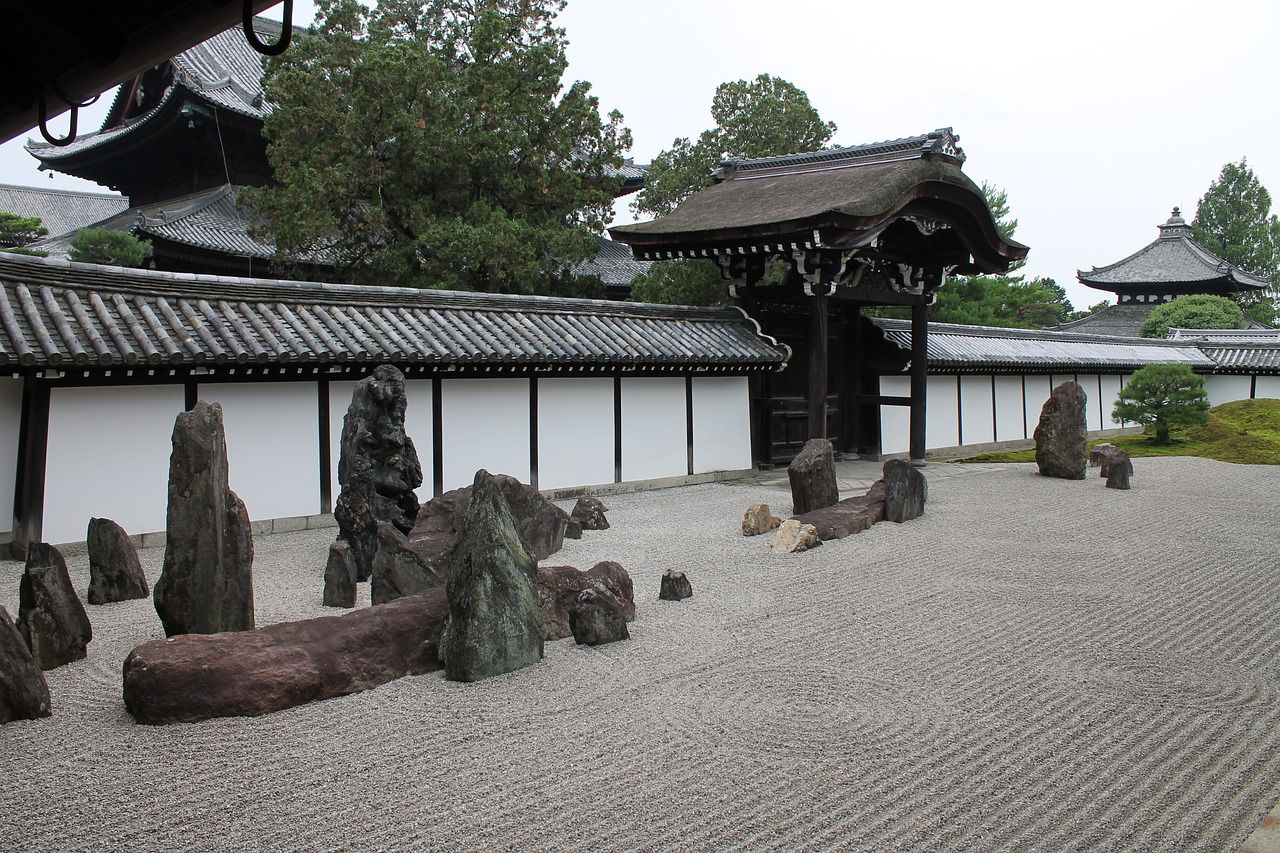
While Japanese gardens typically conjure images of wide spaces and large soothing ponds, you really do not need a huge amount of space to recreate some of the Japanese gardens most recognisable and distinct features and in doing so, create your very own miniature oasis of calm.
Japanese inspiration for your garden is all about making statements. With each statement you strive to make a purposeful connection between the elements of your garden and with the intentions you have for that particular space. Japanese garden design is nothing if not intentional; Every little thing has a purpose, making full use of both its form and function.
1. Create a Zen space
Apart from the inherently recognisable Japanese teahouse, beautifully situated by a peaceful, calm lake, foremost in everyone’s mind when thinking of a Japanese garden is a Zen garden space.
A Zen garden typically consist of an area of small pebbles, often raked over to show lines and indentations, with large boulders placed typically in the centre of the space, or at specific intervals. The raked lines often denote the waves in the ocean with the large boulders being representative of the Universe and its many bodies in harmony with each other.
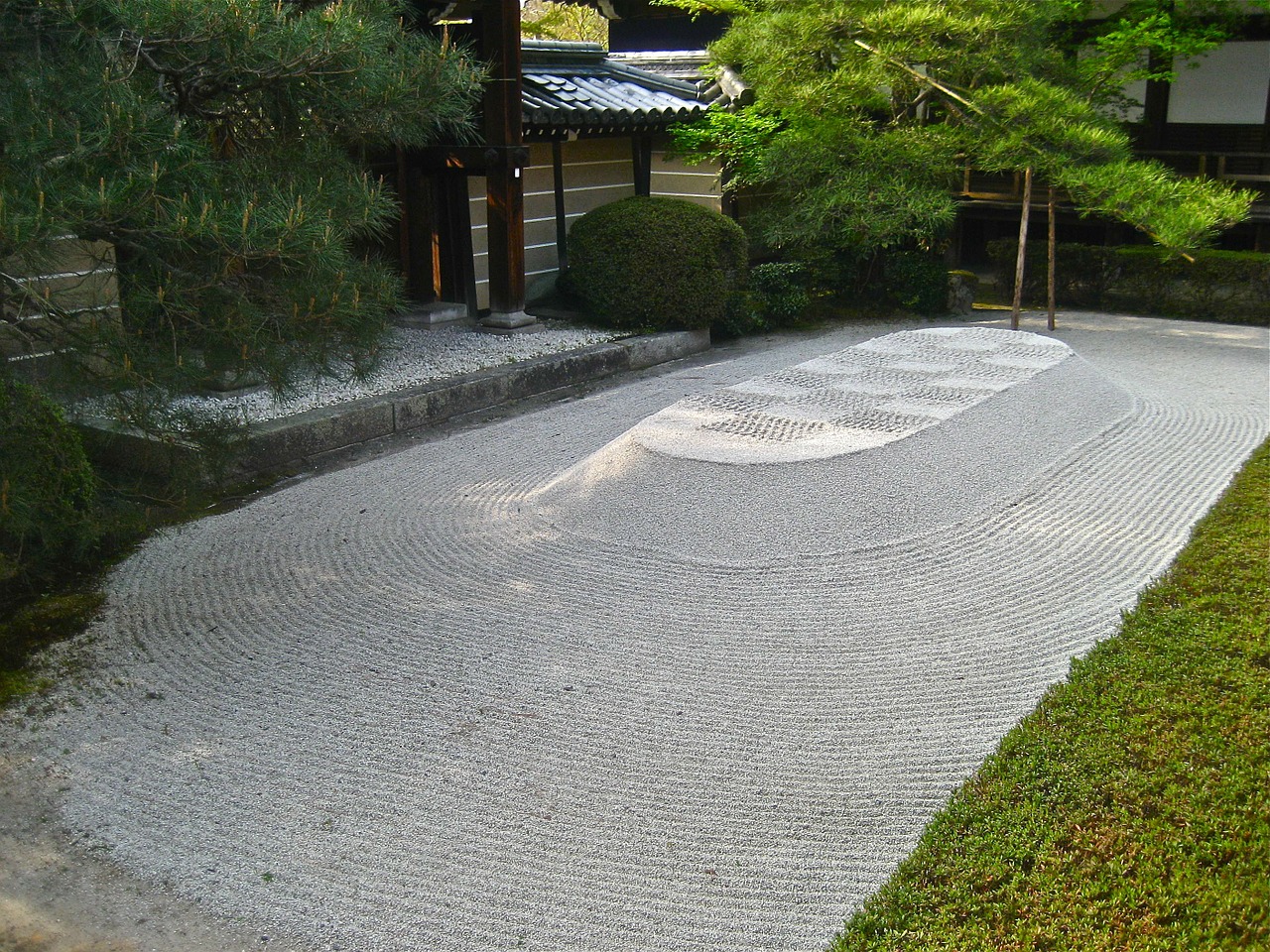
How to steal this idea: In your own garden, regardless of the size of area that you have available to dedicate to this, create a clean, tidy space, the important thing to get right here is the use of space. The ultimate way to achieve the ‘Zen’ in a space is to simply prioritise the space.
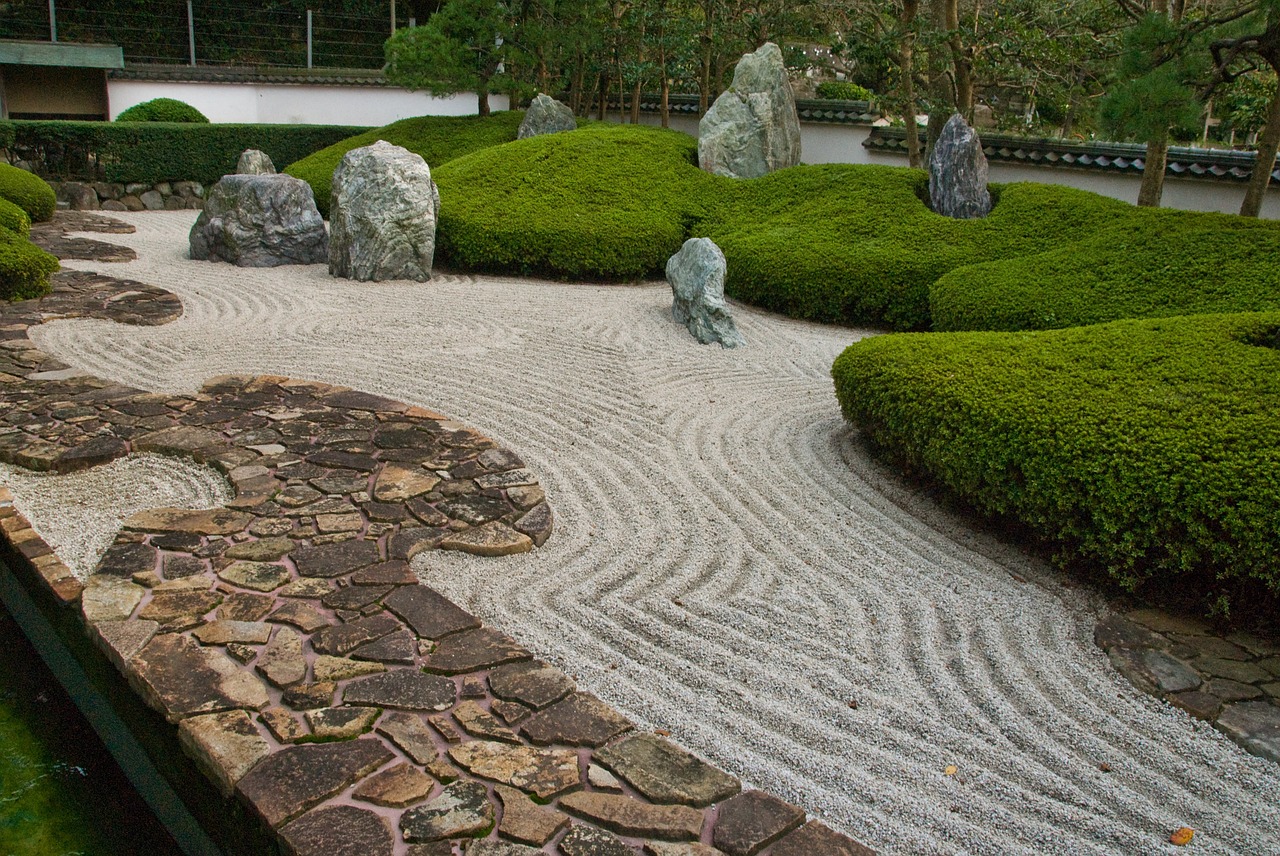
Minimalism is of utmost importance. If space is a premium, think closely about the shape of the area and then the size and colour of the pebbles that you would use to cover it (of course remember to lay down weed inhibitor fabric once the ground is prepared). A smaller space is potentially a lot easier to build and maintain.
You are ultimately aiming for a space which upon viewing, enhances your sense of connection with everything within it and all that surrounds it. A space at which you feel a sense of peace descend within.
2. Choose your trees
Trees play a big role in Japanese garden, whether they are the highly pruned firs that line the park avenues, the bright Acers that cast their gentle form over undulating landscapes or the beautifully kept miniature bonsais.

The trees in the Japanese garden are generally subtle. Singular trees are rarely the main ‘event’ often chosen to fit in to the overall landscape or to enhance the scene in some way.
How to steal this idea:
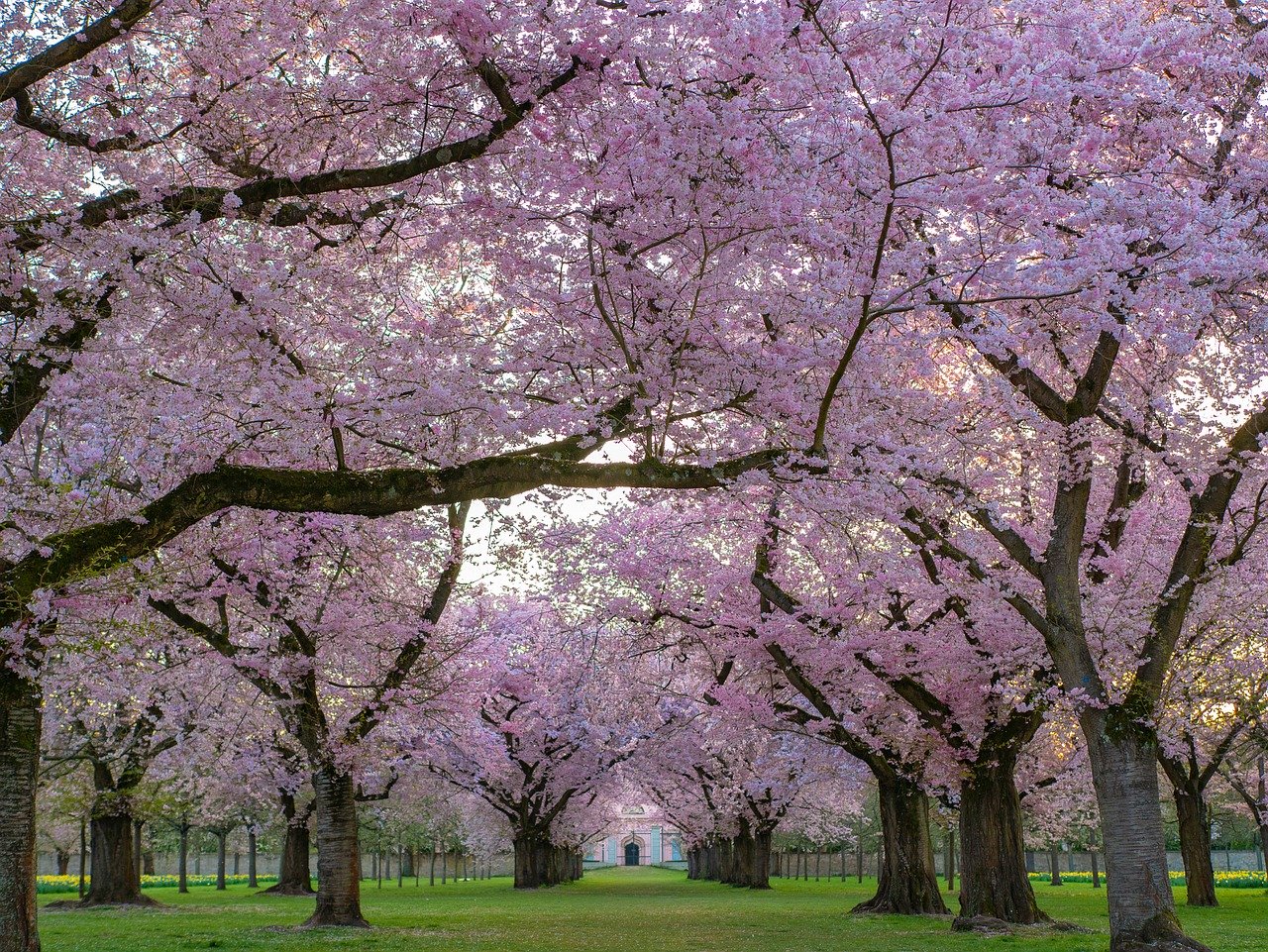
The easier tree-planting options are famed Japanese trees such as the spring time beauty Cherry blossom, the wonderfully bold Acer or even different bamboo species. These are fairly robust and much easier to care with with fewer pruning responsibilities.
If you’re an avid gardener though, you could look in to getting started with a slow-growing miniature bonsai or learning to prune a fir tree ensuring that it represents the message you are trying to convey.
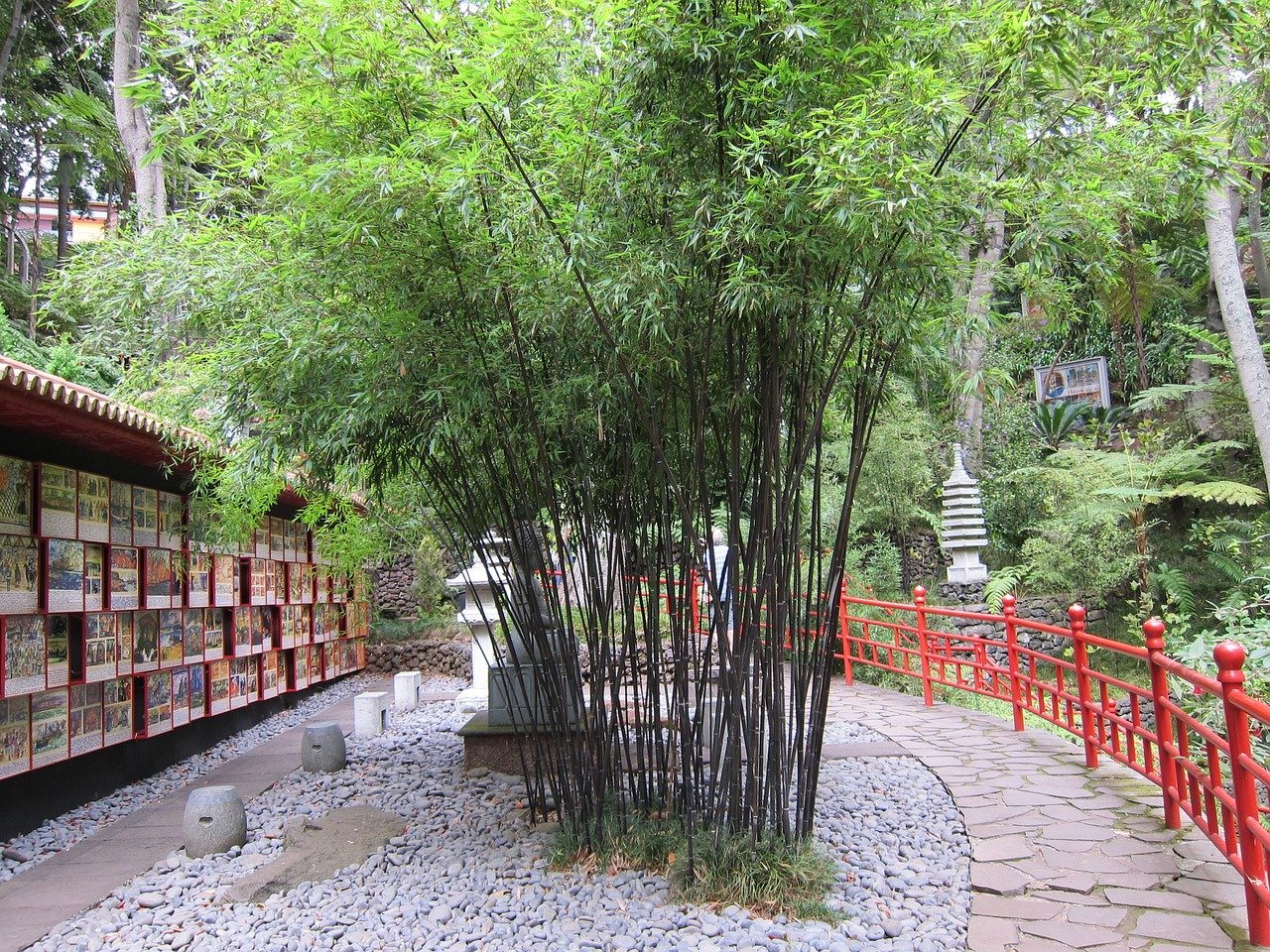
Choose your trees to represent what you feel about the space. Tall stately bamboo for privacy and security. Grown in larges swathes, bamboo behaves as a screen while in small groups they can be used to create a bold statement of height. Choose to grow one or a few small cherry blossom trees to bask in the beauty of spring time and to value the underlying philosophy of constant change and impermanence.
Whatever you decide to grow, appreciate its contribution and beauty to nature and to your garden.
3. Include a water feature
The trickling sound of running water or the gurgling of a small fountain, the sounds of water often evoke a sense of calm and tranquility, long before the source of water is noticed. The water feature itself as a Japanese garden feature enhances the element of water. Flowing water is particularly evocative of constant change and of the vibrancy of energy around us.

A water feature often serves to draw a focal point in a Japanese garden. Whether a still pond or lake, a water fountain made from bamboo or a simple stone basin each serves to introduce the element of water in to the garden.
Search Bamboo Water Fountains on Amazon
How to steal this idea:

When most people think of a body of water in a garden they naturally imagine a lake or a pond. In a Japanese garden, typically a koi pond or a small trickling stream. If you do have the space for this, that’s great. But if you don’t, this feature of the Japanese garden can typically be recreated with ready-made fountains or smaller sized water features. Alternatively a large, deep sealed pot would be a great option for a lily or lotus pond. Solar powered pumps also to help create the rhythmic cascade of water.
Search Solar Powered Pump on Amazon
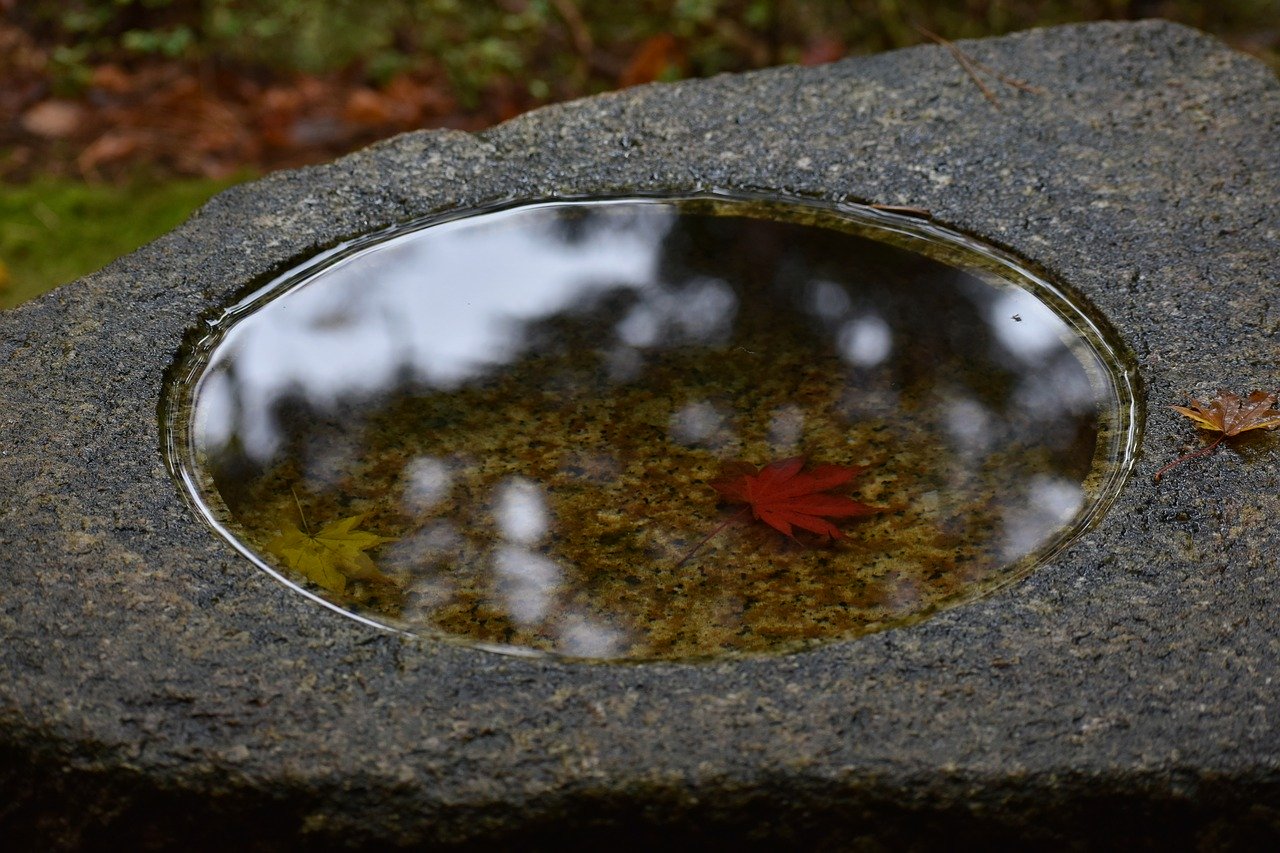
4. Stone lanterns
Stone lanterns, bowls and miniature pagodas are instantly reminiscent of a Japanese garden. The stone lantern also known as tōrō arrived in Japan from China based on the Buddhist practise of lighting a lamp, a figurative offering that is meant to help overcome the ignorance in the pursuit of enlightenment.
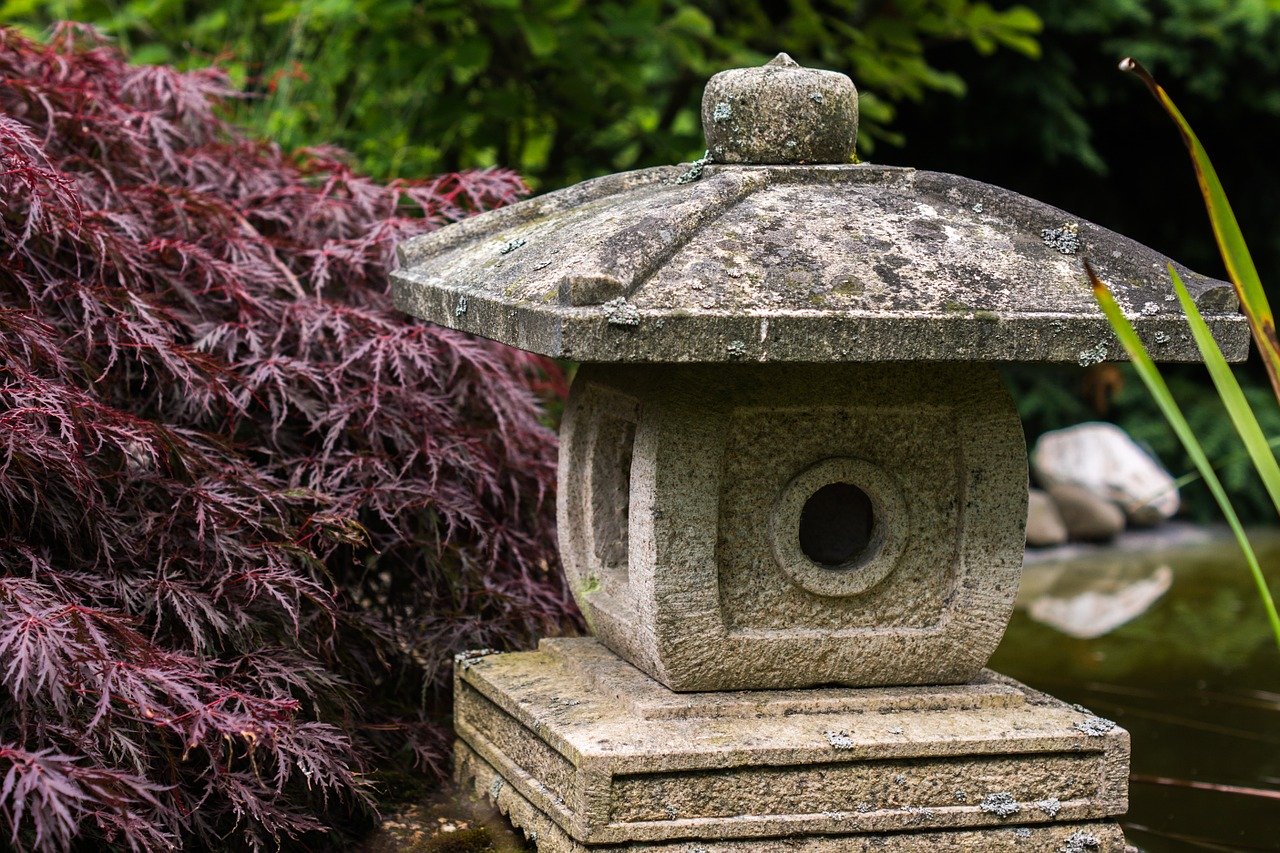
Search Japanese Stone Lanterns on Amazon
Over time it has become a highly recognisable feature of Japanese gardens. Many of these lanterns are purely decorative and rarely lit. They are often placed in ‘out of the way’ corners or under the canopy of trees and are left to weathering and nature. Over time, in this natural environment they become moss covered or algae-green contributing further to the embrace of the nature in the garden.
How to steal this idea:
Stone lanterns come in a large variety of shape and size. Depending on the climate where you live, you may need to consider ones that come with frost protection. Traditionally these were sculpted from granite stone which made it relatively impervious to the elements. Modern replicas are now often made from resin or cast stone, the former being lighter and easier to move.

Search Japanese Stone Lanterns on Amazon
Place your stone lantern in a setting that does not obviously draw attention to it. The stone lantern typically acts to accentuate the landscape, and not dominate it. It often does not stand out yet once the eye rests on it, it seems to fit perfectly in to its surroundings.
Some ideas on where to place a stone lantern include
- near a sharp corner of a building- this serves to soften the harsh lines and joints
- under a canopied tree – the Acer or the Cherry blossom over time tend to be wide canopied trees. This makes them perfect umbrellas for siting stone lanterns
- near a curve in a path – this allows the garden visitor to ‘discover’ it
- near a water feature – if it is possible to site a lantern near to or in the middle of a water feature, the contrasting elements somehow make them both work well together.
Ultimately, when you have chosen a spot for your stone lantern. Stand back and admire it in its surroundings. Do remember it does not have to be the final resting place for the lantern, although tradition dictates that it should grow in to its surroundings.
5. Less is more
In contrast with the traditional English Country garden, Japanese gardens are sparse and scant in comparison. Planting schemes focus on creating an overall story or statement with all elements working together in harmony. That said, space is almost always used to great effect in a Japanese garden. Space is used to create an area of calm, almost akin to a ‘breathing space’ between the various elements in the garden.
Of course the use of space in a garden does require maintenance to keep it in a clear and tidy state. Whether it is a ‘Zen’ sea, or a circular grass patch, the idea here is to create a look and feel that provides a sense of calm and peace.
How to steal this idea:
Space is an important element in Japanese garden design and more so because in order to accentuate the sense of calming Zen, space allows the eye and the senses to rest. In your own garden, designate some areas to simply be ‘plain’ space, whether that is based on lawn, or pebbles the overall idea really is to enhance and indirectly invoke the clarity of space.
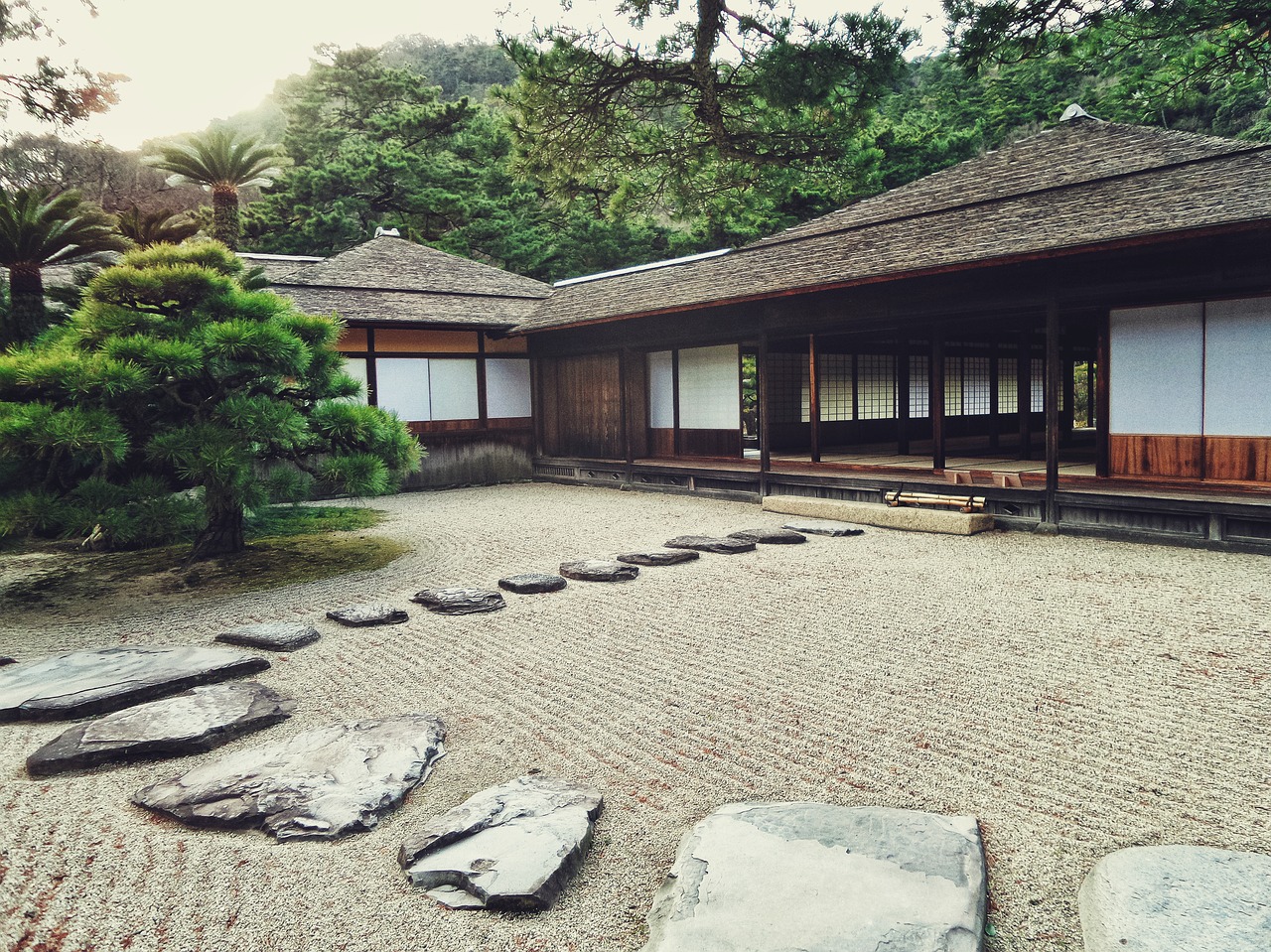
The upkeep of this space should also invoke the meditative Zen practise of being present in each moment and being fully aware. There are even mini mediatation zen garden for you to practice on before you get the real thing.
Search Mini Zen Garden on Amazon
Japanese gardens are well-knowns for their sense of calm and peace. Their Zen-like tranquility is rarely diminished by the throngs of visitors. To recreate some of these elements in your own garden allows you to embrace some of the aspects of Japanese zen directly in your own home garden.











